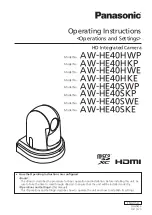
125
124
Explanation of Terms
DPOF :
Digital Print Order Format
DPOF is a format used for recording information on a storage media (image memory card, etc.) that allows
you to specify which of the frames shot using a digital camera are printed and how many prints are made of
each image.
EV :
A number that denotes Exposure Value. The EV is determined by the brightness of the subject and sensitivity
(speed) of the film or CCD. The number is larger for bright subjects and smaller for dark subjects. As the
brightness of the subject changes, a digital camera maintains the amount of light hitting the CCD at a
constant level by adjusting the aperture and shutter speed.
When the amount of light striking the CCD doubles, the EV increases by 1. Likewise, when the light is halved,
the EV decreases by 1.
Frame rate (fps) :
The frame rate is a unit used to indicate the number of images (frames) played back per second. This
camera shoots movie files at 10 consecutive frames per second, a rate that is expressed as 10 fps. By
comparison, TV images are played at 30 fps.
JPEG :
Joint Photographics Experts Group
A file format used for compressing and saving color images. The compression ratio can be selected, but the
higher the compression ratio, the poorer the quality of the expanded image.
Motion JPEG :
A type of AVI (Audio Video Interleave) file format that handles images and sound as a single file. Images in
the file are recorded in JPEG format. Motion JPEG can be played back by QuickTime 3.0 or later.
Troubleshooting
Possible causes
Solutions
Frame erase does not
erase the frame.
Some frames may be protected.
Remove the protection.
The ERASE ALL function
does not erase all the frames.
When the camera is
connected to a personal
computer (PC), the shot
image appears on the
camera’s LCD monitor.
i
The special FinePix F410 USB cable is not
properly connected to the computer or
camera.
i
The PC is not switched on.
i
Set up the camera and the special FinePix
F410 USB cable correctly.
i
Switch the PC on.
Nothing happens when I
use the camera switches.
i
Camera malfunction.
i
The battery is exhausted.
i
Briefly remove the battery or disconnect the AC
power adapter. Then reload the battery or
reconnect the AC power adapter and try again.
i
Load a new fully charged battery.
The camera no longer
works correctly.
The camera has suffered an unforeseen
problem.
Briefly remove the battery or disconnect the AC
power adapter. Then reload the battery or
reconnect the AC power adapter and try again.
There is speckling on the
image.
The shot was taken with a slow shutter speed (long
exposure) in a high-temperature environment.
This is a characteristic of CCDs and does not
indicate a camera fault.
The camera does not emit
any sound.
i
The camera volume is set too low.
i
The microphone was blocked during
shooting/recording.
i
There is something covering the speaker
during playback.
i
Adjust the volume.
i
Take care not to block the microphone
during shooting/recording.
i
Ensure that the speaker is uncovered.
Troubleshooting







































